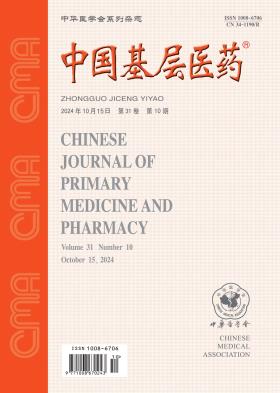Application effect of Zhixinxing health education mode in postoperative pain management of surgical patients
引用次数: 0
Abstract
目的 在手术患者术后疼痛管理中应用知信行健康教育模式,并分析知信行健康教育模式的应用效果。 方法 选择2017年3月至2019年3月舟山市妇幼保健医院接受的手术患者100例,采用随机数字表法分对照组与研究组各50例,分别予以常规教育护理、知信行健康教育模式。比较两组自我管理行为评分、术后疼痛评分、护理总满意率。 结果 研究组的自我管理行为评分[(83.81±5.21)分]高于对照组[(71.35±5.23)分],且研究组的术后疼痛评分[(2.72±0.16)分]低于对照组[(4.91±0.71)分],差异均有统计学意义(t=11.93、21.28,均P<0.05);研究组的护理总满意率(96.00%)高于对照组(84.00%),差异有统计学意义(χ2=4.00,P<0.05)。 结论 在手术患者术后疼痛管理中应用知信行健康教育模式,可以有效提高患者的自我管理水平,能够帮助其减轻机体疼痛感,且增加患者满意度。知新兴健康教育模式在外科病人术后疼痛管理中的应用效果
Objective: To apply the knowledge, belief, and practice health education model in postoperative pain management of surgical patients, and analyze the application effect of the knowledge, belief, and practice health education model. Method: A total of 100 surgical patients who underwent surgery at Zhoushan Maternal and Child Health Hospital from March 2017 to March 2019 were selected. They were randomly divided into a control group and a study group with 50 patients each, and received routine education and nursing, as well as knowledge, belief, and practice health education models, using a random number table method. Compare the self-management behavior score, postoperative pain score, and overall nursing satisfaction rate between two groups. The self-management behavior score of the study group [(83.81 ± 5.21) points] was higher than that of the control group [(71.35 ± 5.23) points], and the postoperative pain score of the study group [(2.72 ± 0.16) points] was lower than that of the control group [(4.91 ± 0.71) points], with statistical significance (t=11.93, 21.28, all P<0.05); The total satisfaction rate of nursing care in the study group (96.00%) was higher than that in the control group (84.00%), and the difference was statistically significant( χ 2=4.00, P<0.05). Conclusion: The application of knowledge, belief, and practice health education model in postoperative pain management of surgical patients can effectively improve their self-management level, help them reduce body pain, and increase patient satisfaction.
本文章由计算机程序翻译,如有差异,请以英文原文为准。
求助全文
约1分钟内获得全文
求助全文
来源期刊
CiteScore
0.10
自引率
0.00%
发文量
32251
期刊介绍:
Since its inception, the journal "Chinese Primary Medicine" has adhered to the development strategy of "based in China, serving the grassroots, and facing the world" as its publishing concept, reporting a large amount of the latest medical information at home and abroad, prospering the academic field of primary medicine, and is praised by readers as a medical encyclopedia that updates knowledge. It is a core journal in China's medical and health field, and its influence index (CI) ranks Q2 in China's academic journals in 2022. It was included in the American Chemical Abstracts in 2008, the World Health Organization Western Pacific Regional Medical Index (WPRIM) in 2009, and the Japan Science and Technology Agency Database (JST) and Scopus Database in 2018, and was included in the Wanfang Data-China Digital Journal Group and the China Academic Journal Comprehensive Evaluation Database.

 求助内容:
求助内容: 应助结果提醒方式:
应助结果提醒方式:


